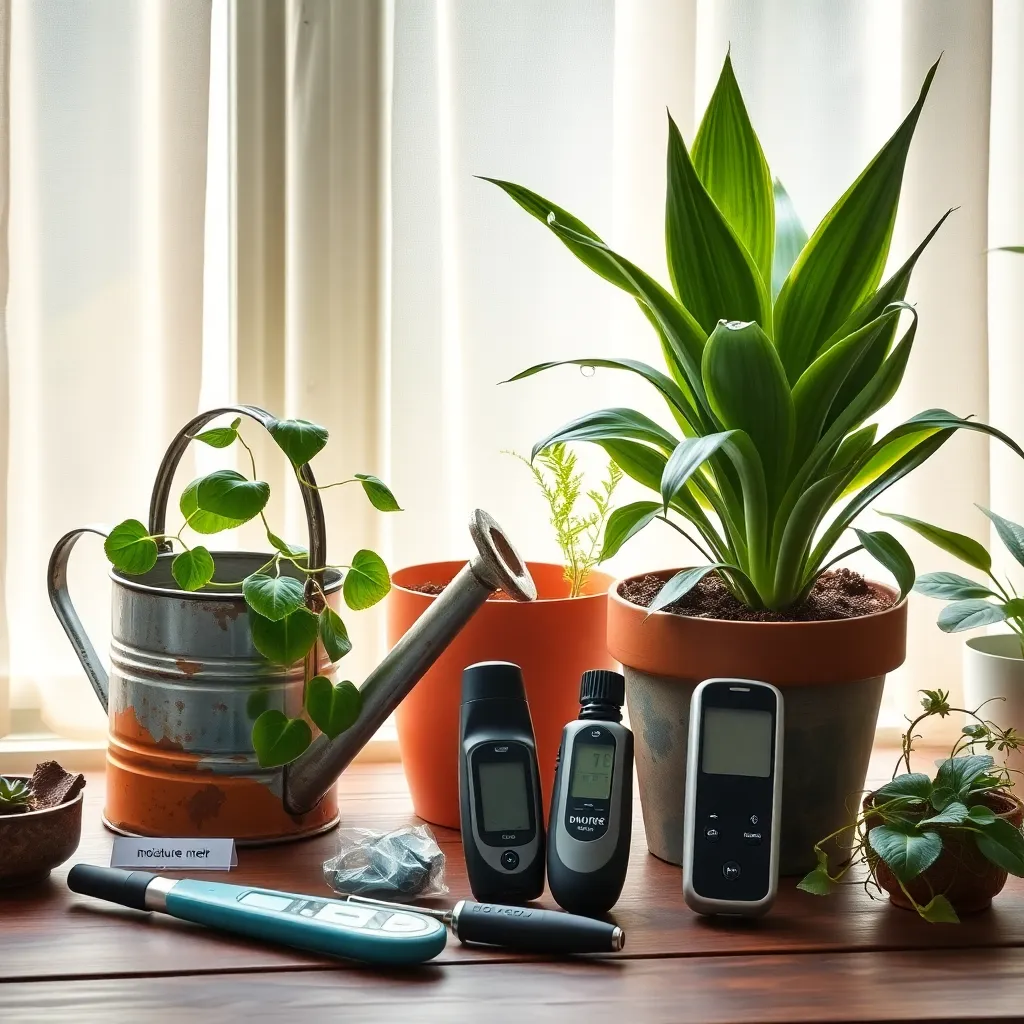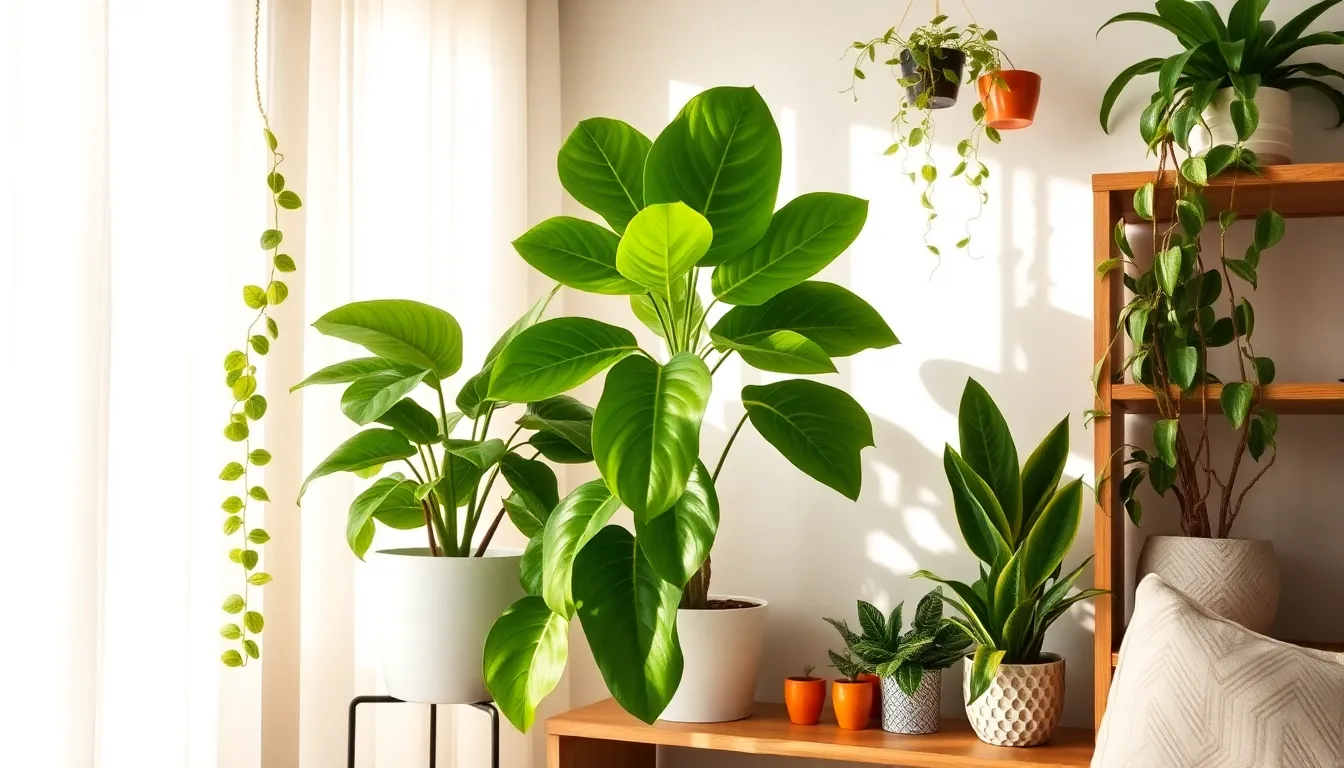In the vibrant world of indoor gardening, fast-growing houseplants offer a delightful way to bring life and energy into your home. Whether you’re just starting your gardening journey or you’re a seasoned green thumb looking to expand your leafy repertoire, there’s something particularly rewarding about watching your plants thrive at a spirited pace. These quick growers not only provide a visual feast for the eyes but can also boost your confidence as a gardener, offering tangible results in a relatively short time frame.
The beauty of fast-growing houseplants lies in their ability to transform a space and uplift your spirits with minimal effort. They are perfect for those who enjoy a dynamic environment, as these plants often showcase new leaves or blooms before you know it. In this article, you’ll discover seven of the best fast-growing varieties that promise to invigorate your living space, each with its unique charm and care requirements. From the lush, cascading tendrils of the Pothos to the striking, upright stance of the Snake Plant, you’ll learn how to nurture these plants to their full potential, ensuring your indoor garden flourishes with vitality and ease.
Choosing Speedy Indoor Plants
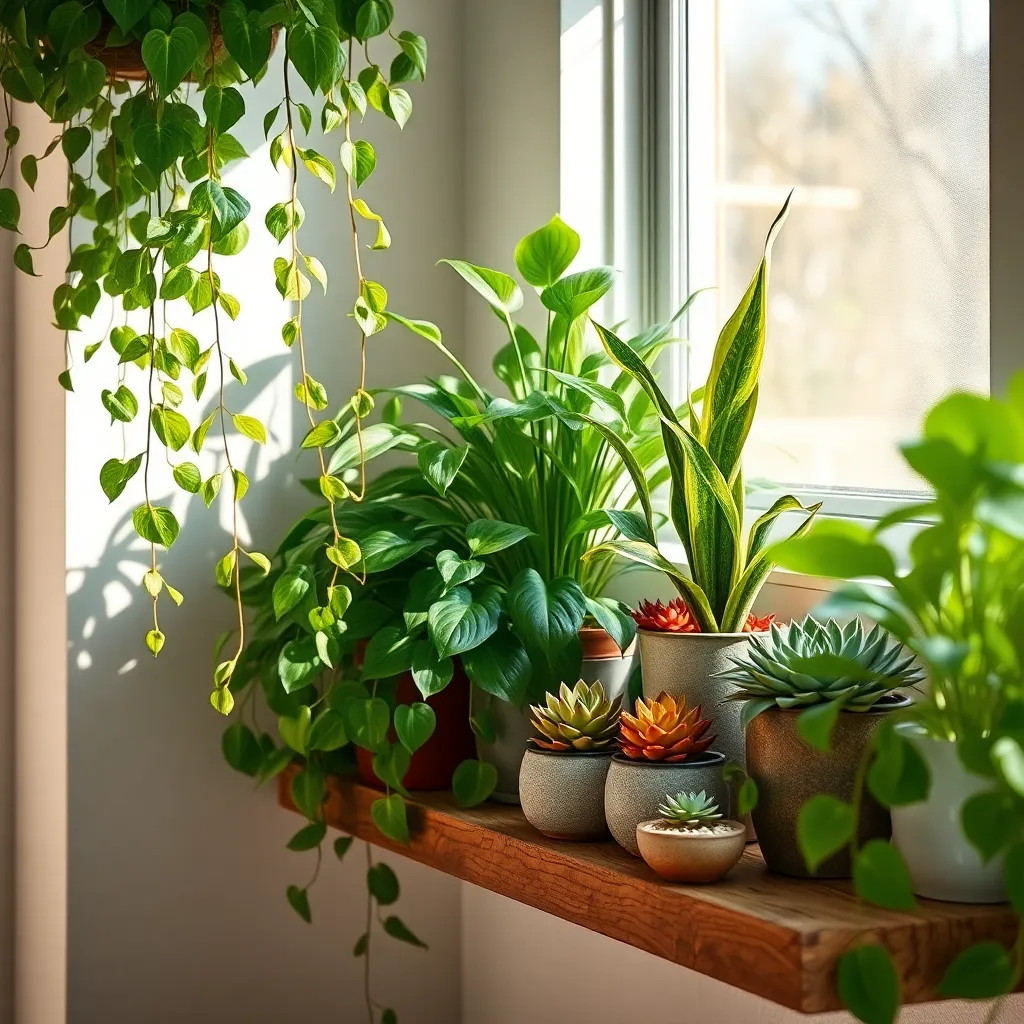
When selecting speedy indoor plants, it’s crucial to consider their adaptability to indoor conditions. Many fast-growing houseplants thrive with minimal sunlight and can flourish even in low-light areas of your home.
Spider plants are an excellent choice for beginners due to their resilience and rapid growth. Ensure they’re placed in a well-draining pot with a mix of peat-based soil to promote healthy root development.
Another fantastic option is the pothos plant, renowned for its ability to grow quickly and adapt to various lighting conditions. Water your pothos when the top inch of soil feels dry, and it will reward you with lush, trailing vines.
For a touch of tropical flair, consider the philodendron, which is both fast-growing and easy to care for. These plants prefer indirect light and thrive in a potting mix that’s kept consistently moist but not waterlogged.
To maintain your fast-growing plants, it’s important to provide regular feeding during the growing season. Use a balanced, water-soluble fertilizer every four to six weeks to keep them vigorous and thriving.
Advanced gardeners might explore propagation techniques to multiply their favorite speedy houseplants.
- For instance, spider plants produce offshoots that can be easily rooted in water or directly into soil.
- Pothos stems can be trimmed and placed in water until roots develop, then transferred to soil.
Ideal Conditions for Rapid Growth
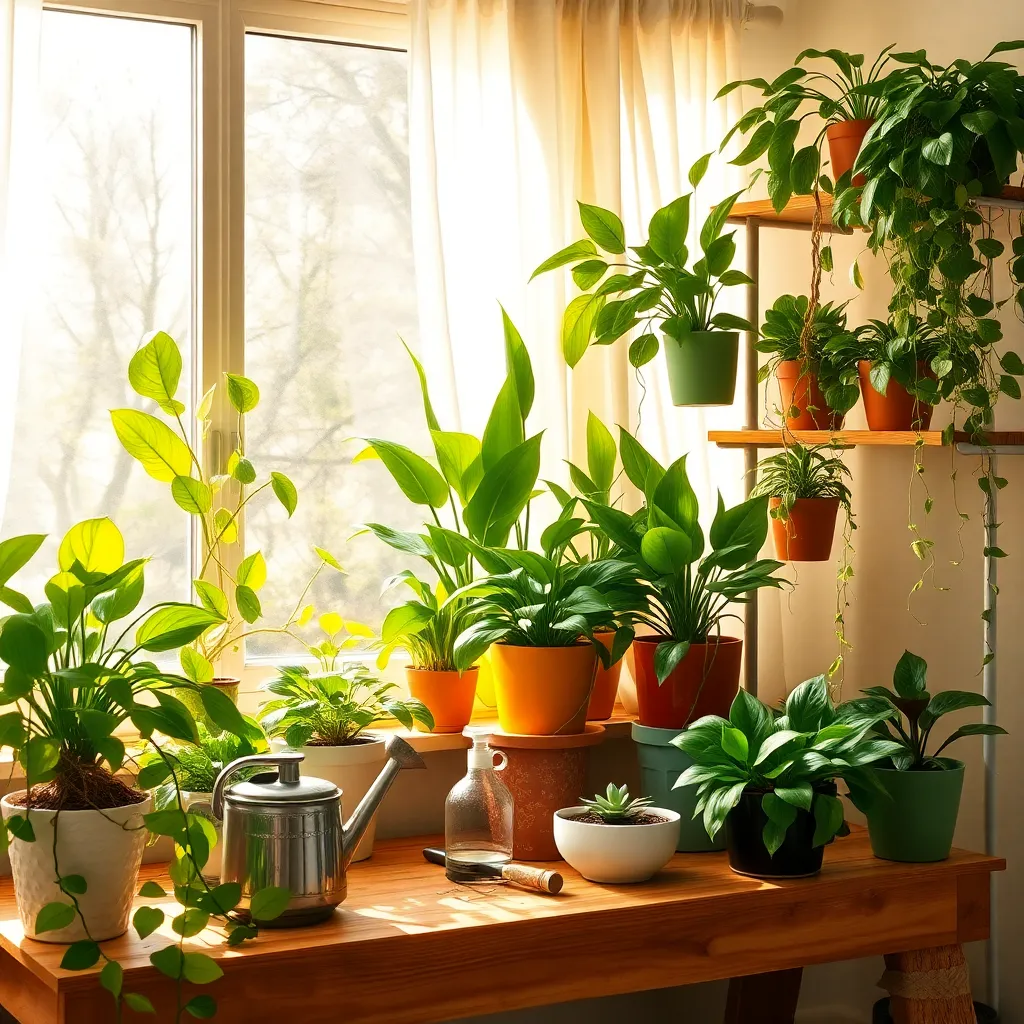
For rapid growth of houseplants, it is crucial to provide the right combination of light, water, and soil. Most fast-growing plants thrive in bright, indirect sunlight, which mimics their natural habitat under the canopy of taller plants.
Ensuring proper watering is another key factor for speedy growth. Typically, fast-growing houseplants prefer their soil to be kept consistently moist, but not waterlogged, so it’s important to allow the top inch of soil to dry out between waterings.
Using the appropriate soil type can significantly enhance growth rates. A well-draining potting mix enriched with organic matter, such as peat or coconut coir, provides the ideal environment for roots to expand and access nutrients efficiently.
Beginners can start by selecting a soil mix labeled specifically for houseplants, while more experienced gardeners might consider customizing their own mix. Adding perlite or sand can improve drainage and aeration, which are critical for preventing root rot and promoting healthy root development.
Temperature and humidity also play vital roles in plant growth. Most fast-growing houseplants prefer temperatures between 65°F and 75°F and benefit from higher humidity levels, which can be achieved with regular misting or by placing a tray of water near the plant.
As an advanced tip, consider using a balanced liquid fertilizer every couple of weeks to provide the necessary nutrients for accelerated growth. Be sure to dilute the fertilizer to half the recommended strength to avoid root burn and encourage healthy, lush foliage.
Top Picks: Fast-Growing Favorites
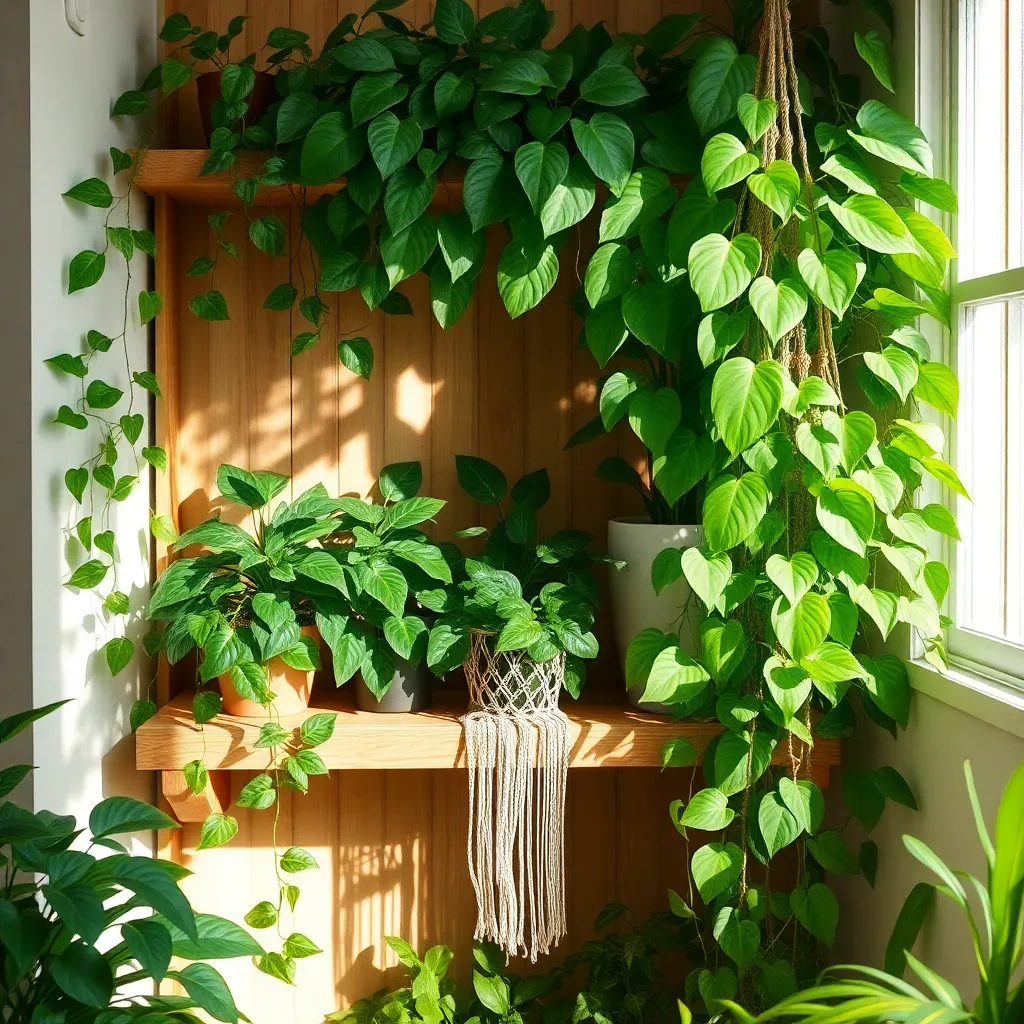
When looking for fast-growing houseplants, consider starting with the Spider Plant (Chlorophytum comosum), known for its rapid growth and adaptability. This plant thrives in bright, indirect light and can tolerate occasional neglect, making it perfect for beginners.
To ensure your spider plant grows quickly, use a well-draining potting mix and water it when the top inch of soil feels dry. An added tip for advanced gardeners is to occasionally mist the leaves to mimic its natural humid environment, promoting lush growth.
Another excellent choice is the Pothos (Epipremnum aureum), which grows rapidly and is tolerant of low light. Ensure your pothos plant has a loose, well-draining soil mix, and water it once a week, allowing the soil to dry out between waterings.
For those looking to boost pothos growth, fertilize monthly with a balanced houseplant fertilizer during the growing season. You can also encourage bushier growth by pinching back stems, which will help create a fuller plant.
The ZZ Plant (Zamioculcas zamiifolia) is another fast-growing favorite, praised for its ability to thrive in low-light environments. It requires minimal watering; once every two to three weeks is sufficient, as its rhizomes store water efficiently.
To maximize growth, place your ZZ plant in a well-draining potting mix and ensure it is not exposed to direct sunlight, which can scorch its leaves. Advanced gardeners might consider repotting every couple of years to accommodate the plant’s growth, using a container that provides ample room for its expanding root system.
Light Requirements for Vigorous Growth
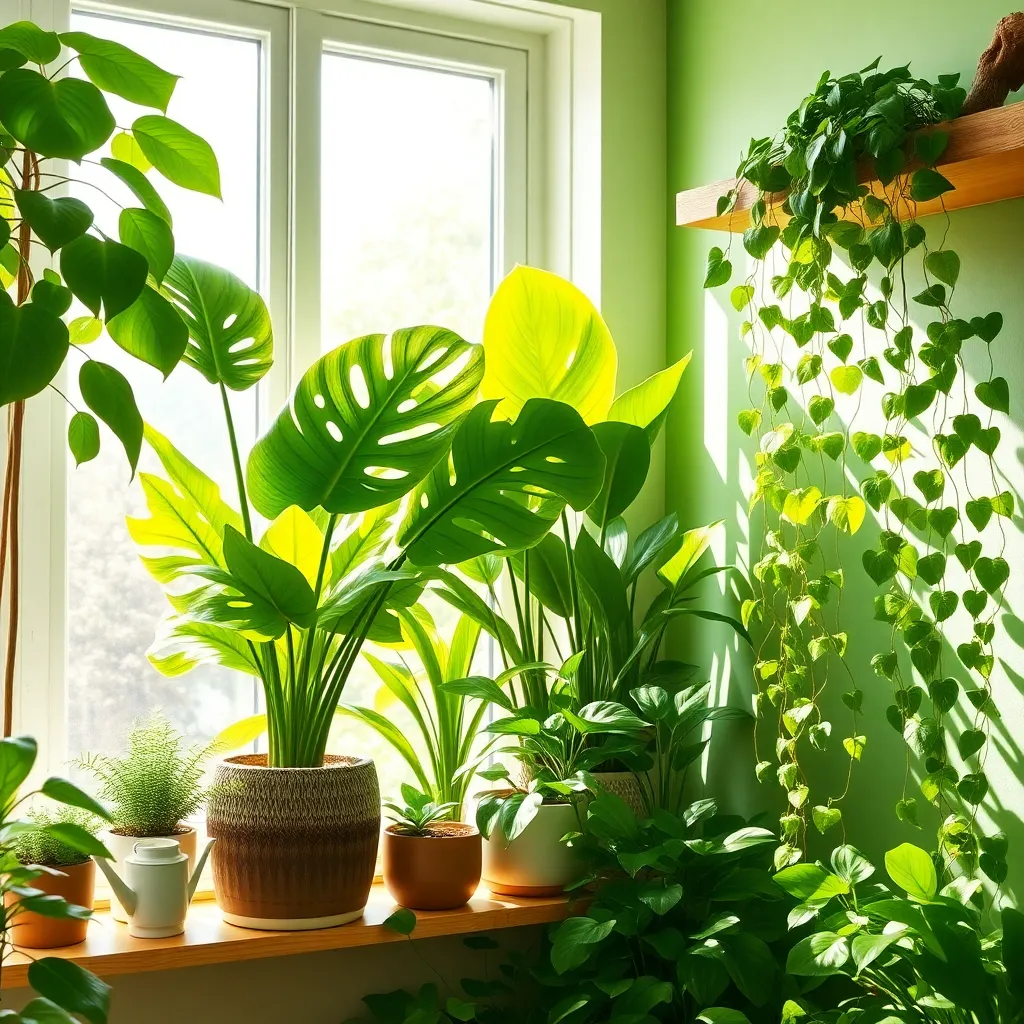
Understanding the light requirements of your houseplants is crucial for ensuring their rapid growth and overall health. Most fast-growing houseplants thrive with bright, indirect light, which simulates their natural habitat found under the canopy of trees.
To create the perfect lighting conditions, place your plants near a window that receives plenty of sunlight but is filtered by sheer curtains or blinds. If natural light is insufficient, consider using full-spectrum grow lights, which replicate the spectrum of natural sunlight and can be adjusted for intensity and duration.
Some plants, like pothos and spider plants, are more tolerant of lower light levels but will grow faster with increased light. Monitor your plants for signs of light stress, such as scorched leaves or leggy growth, which indicate they may need a change in their lighting conditions.
For advanced gardeners, rotating your plants weekly can ensure even light exposure and stimulate balanced growth. Experiment with different light setups to find the best fit for your plant’s needs, and remember that seasonal changes may require adjustments in their positions. By meeting these light requirements, you’ll set the stage for lush, vigorous growth in your indoor garden.
Efficient Watering Tips
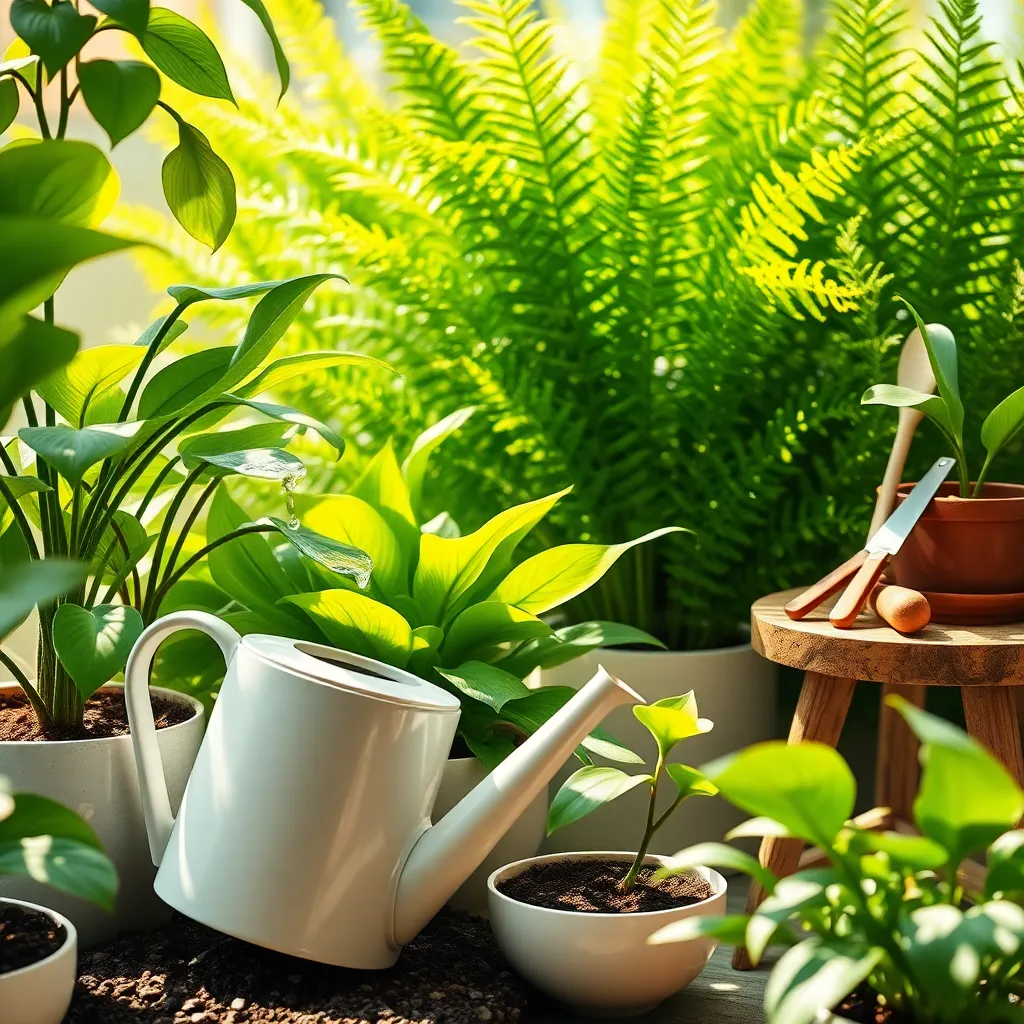
When it comes to efficiently watering your fast-growing houseplants, understanding their unique needs is crucial. Each plant has different requirements based on its species, size, and stage of growth, so tailoring your approach is key.
Begin by checking the soil moisture before watering; this can prevent overwatering, which is a common mistake. Insert your finger about an inch into the soil—if it feels dry at this depth, it’s time to water.
Using the right type of water can also make a difference in plant health. Tap water is generally acceptable, but letting it sit overnight allows chlorine to evaporate, making it gentler on your plants.
For more advanced care, consider collecting rainwater, which is naturally soft and free of chemicals. This is particularly beneficial for plants like ferns and peace lilies that thrive in softer water conditions.
Implementing a consistent watering schedule can help ensure your plants are neither thirsty nor waterlogged. Most houseplants prefer to dry out slightly between waterings, so observe how quickly the soil dries out in your specific environment.
- Tip 1: Use a moisture meter for precise readings, especially if you have multiple plants with varying needs.
- Tip 2: Group plants with similar watering needs together to simplify your watering routine.
Remember that factors like humidity and temperature also affect how often you need to water. In drier climates or during winter months, plants may require less water, so adjust your routine accordingly.
Feeding Your Fast-Growing Plants
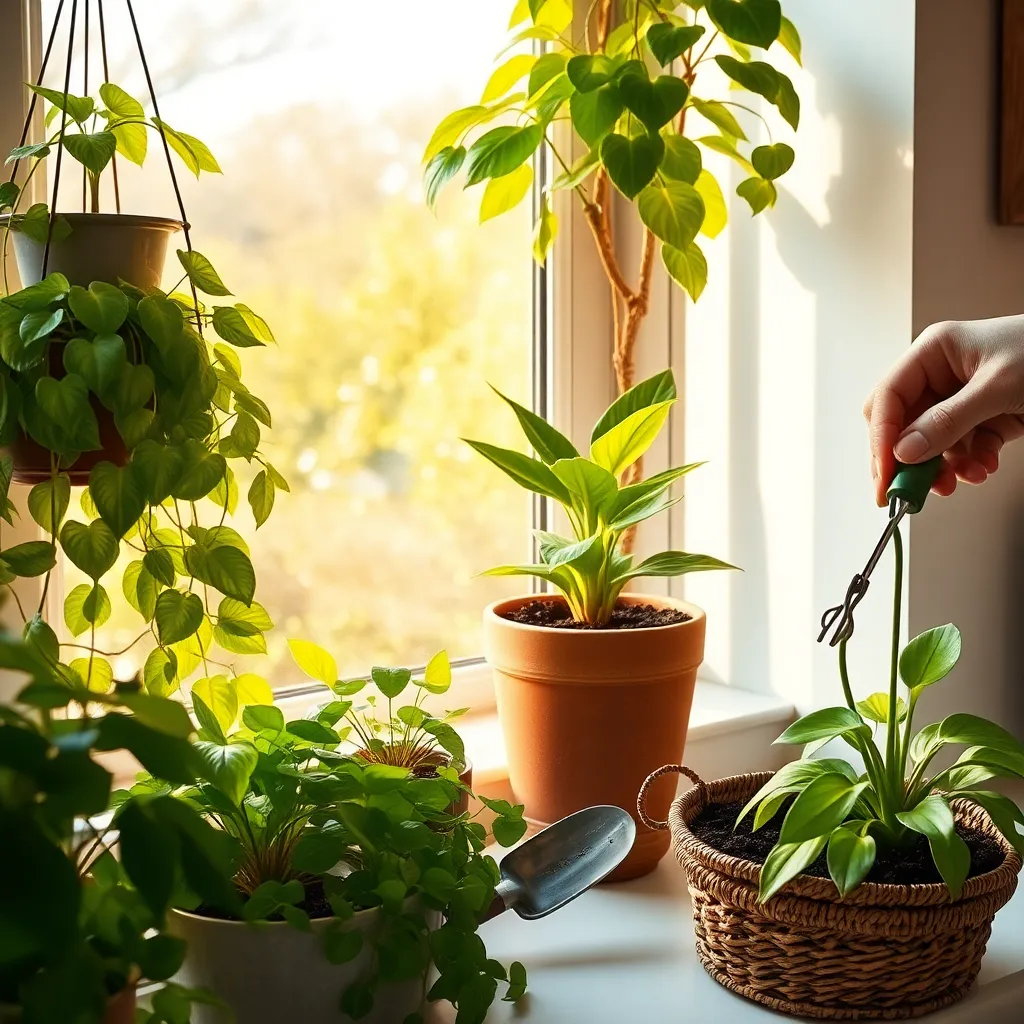
Feeding your fast-growing plants is essential to maintain their vigor and health. Fast-growing houseplants often require more nutrients than their slower counterparts, so regular feeding is key.
One effective way to ensure your plants get the nutrients they need is by using a balanced liquid fertilizer. Apply the fertilizer every two weeks during the growing season, which generally spans from spring to early fall.
Organic options such as compost tea or fish emulsion can provide a nutrient boost without the risk of chemical buildup. These can be applied monthly to maintain nutrient levels in the soil.
For experienced gardeners, consider using slow-release fertilizers, which provide a steady nutrient supply over time. This method works well for those who prefer a less frequent feeding schedule while still ensuring their plants thrive.
Common Challenges and Solutions
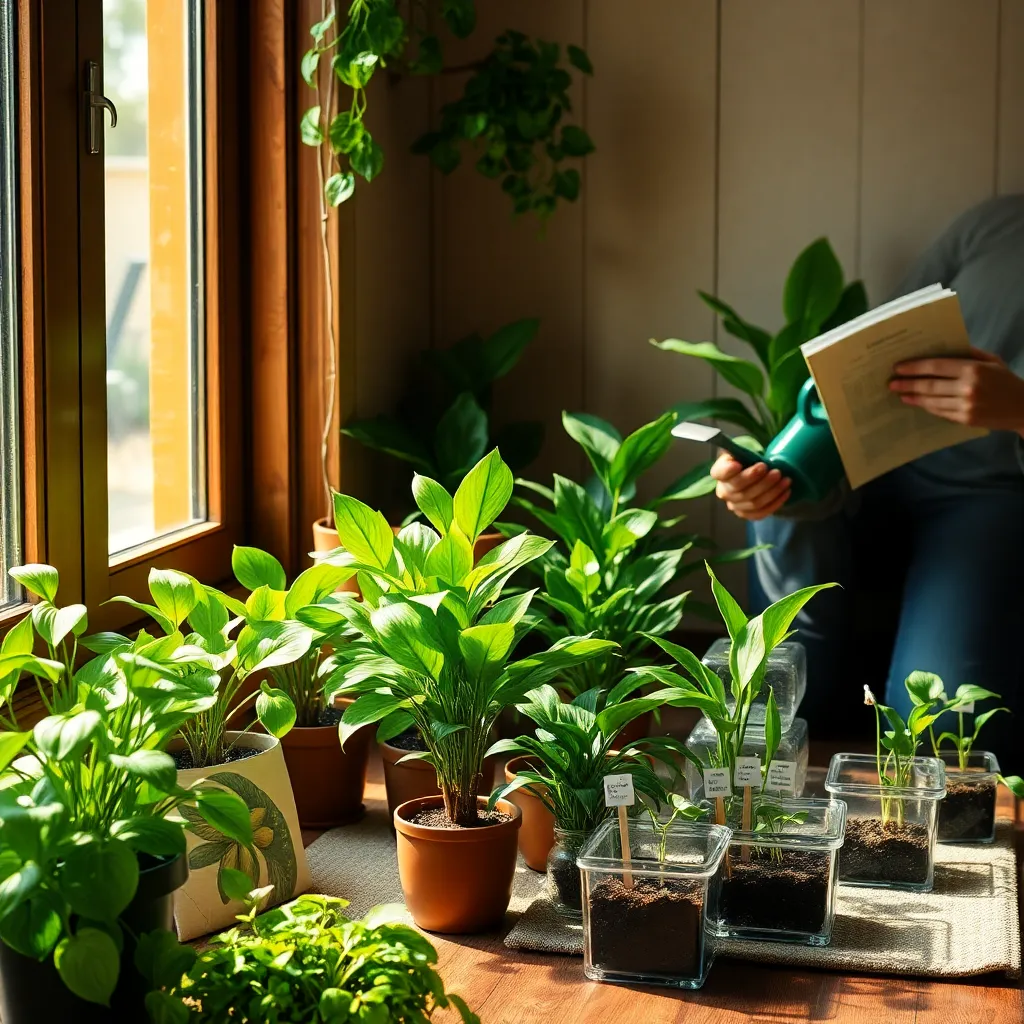
Fast-growing houseplants can face a variety of challenges, but with the right care, they can thrive. One common issue is overwatering, which can lead to root rot and plant stress. To prevent this, ensure your pot has proper drainage and use a well-draining soil mix, such as a combination of peat moss, perlite, and pine bark.
Adjusting to new environments can be tough for these plants, often resulting in leaf drop or yellowing. If your plant shows signs of stress, check its light exposure and consider relocating it to a brighter spot, avoiding direct sunlight that can scorch leaves.
Another frequent challenge is nutrient deficiency, especially in fast-growing species that quickly deplete soil nutrients. Fertilize regularly during the growing season using a balanced liquid fertilizer, diluted to half strength, to encourage healthy growth.
Pests like spider mites and aphids can also pose a problem for fast-growing plants. Regularly inspect your plants and maintain good air circulation around them to deter infestations, using insecticidal soap for treatment if necessary.
Conclusion: Growing Success with These Plants
In exploring the symbiotic relationship between nurturing houseplants and cultivating thriving relationships, we’ve discovered seven fast-growing green companions: the resilient pothos, adaptable spider plant, vibrant philodendron, humble snake plant, lush peace lily, charming ZZ plant, and the ever-popular bamboo palm. Each plant represents vital relationship concepts such as adaptability, resilience, growth, peace, charm, and balance. Just as these plants thrive with care and attention, so too can our relationships flourish when we apply these principles.
As an actionable next step, choose one plant that resonates with you and incorporate it into your home as a living reminder of the qualities you wish to nurture in your relationships. This physical emblem will serve as a daily prompt to invest time and care into your connections.
Remember, the journey to relationship success is an ongoing endeavor. Bookmark this article now as your quick reference guide to revisiting these nurturing principles. By taking small, consistent actions inspired by nature, you’re setting the groundwork for a future rich in connection and mutual growth. Embrace this opportunity and watch as both your plants and relationships flourish together.


